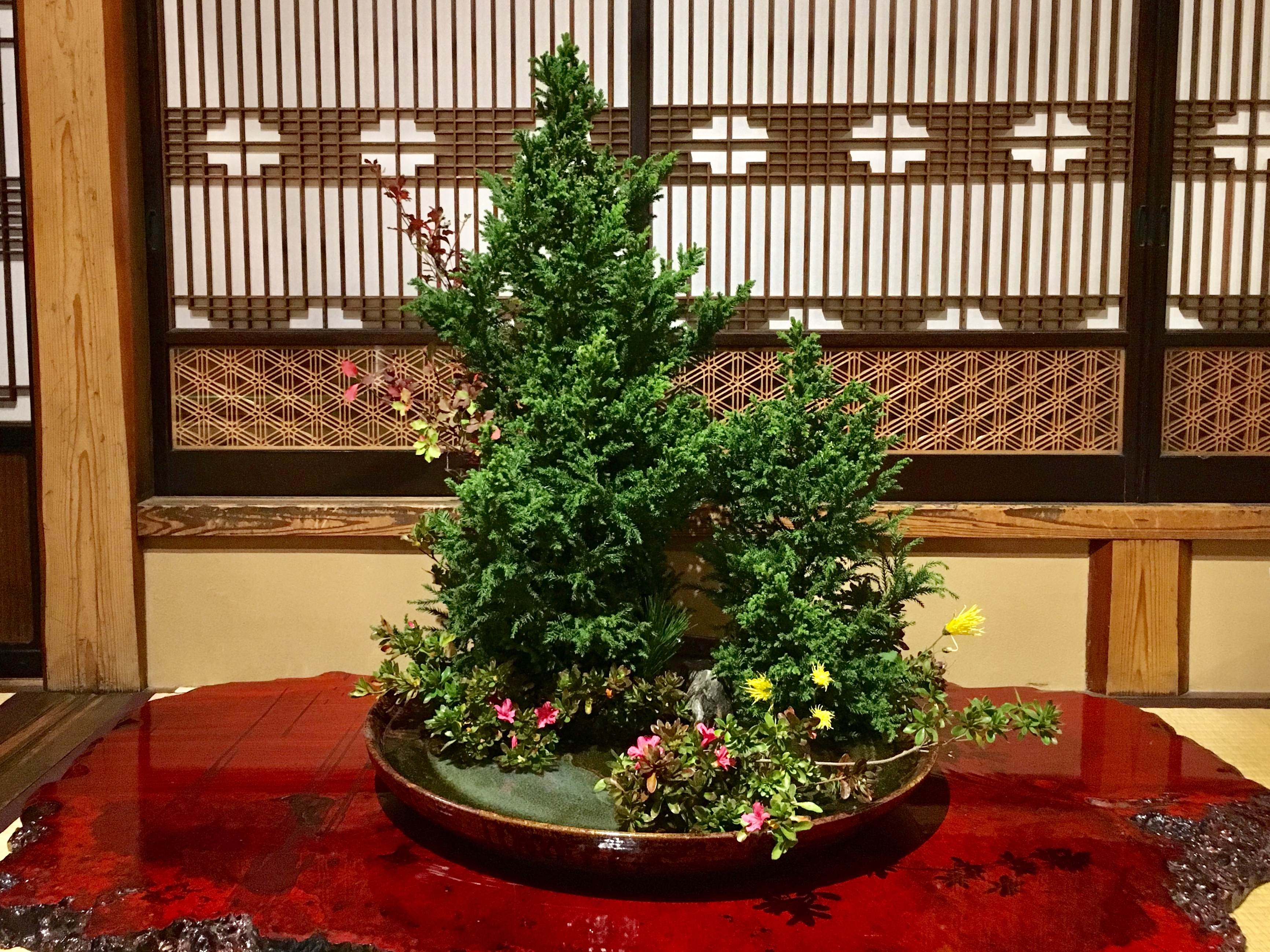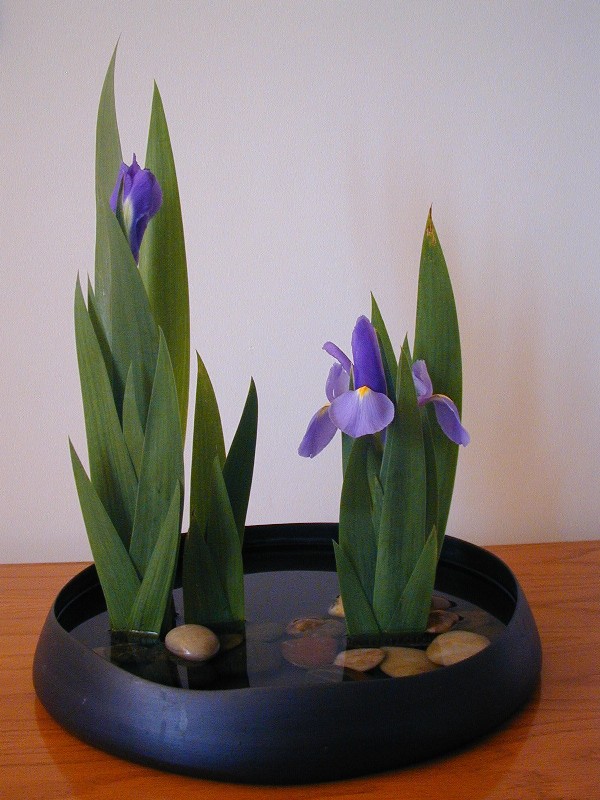Moribana on:
[Wikipedia]
[Google]
[Amazon]


 ''Moribana'' (盛り花, 盛花) is one of the expressions of Japanese flower arrangement ''
''Moribana'' (盛り花, 盛花) is one of the expressions of Japanese flower arrangement ''
File:Ikebana mt.jpg, A ''kadōka'' creating an arrangement in a flat vessel
File:Saga Goryu moribana kōseitai (hidarigatte).jpeg, ''Moribana kōseitai (hidarigatte)'' of the ''Saga Goryū''
File:Moribana chokutai.jpg, ''Moribana chokutai'' (upright style)
File:Slanting Moribana.JPG, ''Moribana shatai'' (slanted style)


Ikebana
is the Japanese art of flower arrangement. It is also known as . The origin of ikebana can be traced back to the ancient Japanese custom of erecting Evergreen, evergreen trees and decorating them with flowers as yorishiro () to invite the go ...
''. The word ''Moribana'' means "full bloom flowers".
History
This style was introduced by Ohara Unshin around 1890 after theMeiji Restoration
The , referred to at the time as the , and also known as the Meiji Renovation, Revolution, Regeneration, Reform, or Renewal, was a political event that restored Imperial House of Japan, imperial rule to Japan in 1868 under Emperor Meiji. Althoug ...
of 1868. ''Moribana'' is not only an expression of Ohara’s creative departure from '' Ikenobo'', but was also a strong sign of the Western influence in Japan. The arranged flowers may be placed in Western-style rooms and entranceways, not just in the ''tokonoma
A , or simply , is a recessed space in a Japanese-style reception room, in which items for artistic appreciation are displayed. In English, a could be called an Alcove (architecture), alcove.
History
There are two theories about the predece ...
'' alcove found in traditional Japanese-style rooms. While distinctly a hallmark of the Ohara school, ''moribana'' has become one of the standard forms learned and created by ''Ikebana'' practitioners regardless of school or style affiliation.
''Moribana'' is often associated with '' nageire'', and although the two styles share similarities, their historic development is different, ''nageire'' being older.
Description
''Moribana'' uses one or more clusters of arrangements in ''kenzan
A ''kenzan'' (剣山), also called spiky frog, is a specific device used in the Japanese art of flower arrangement ikebana for fixing the flowers in the container. It consists of a heavy lead plate with erected brass needles where the stipes are ...
'', a holder with many sharp points into which flowers are inserted, or '' shippo'' that has holes, to replicate how water plants grow and how creatures move around in natural ponds. The main feature of ''moribana'' is the broad expanse of natural-looking shapes and a mound of beautiful flowers. Choice of materials and how much water shows in front, side, or back reflects the passing of the season. For example, more water is placed to the front during Spring and Summer.
A proper ''moribana'' design uses a flat, shallow container, sometimes referred to as ''suiban'', which allows for the spreading of floral and line materials sideways and away from the earlier classic vertical lines of the ''rikka
is a form of ''ikebana''.
History
The origins go back to Buddhist offerings of flowers, which are placed upright in vases. This style was established in the Muromachi period (1333–1568).
The term came to be a popular synonym for in th ...
'', '' seika'' and even '' nageirebana''.
Styles
There are different styles of ''moribana'' depending on the length and angle of the primary, secondary, and ornamental stems. * The upright form is the most common; it exudes a feeling of stability and gravity. In this form, the primary stem is about as long as the diameter and depth of the container combined, with the secondary stem being around two-thirds and the ornamental stem about half the length of the primary branch. In the ''Ikenobō'' school the upright form is called . The primary stem is placed vertically, while the secondary stem is tilted 45 degrees and scattered over a 30-degree area to the front and left. The ornamental stem is tilted 60 degrees and placed across a 45-degree area to the front and right. Seen from above, the three stems form a right triangle. Flowers are placed inside this triangle to fill out the shape. * Slanting form is a reversed arranging form that can be used depending on the placement of the display or shapes of the branches. Branches that look beautiful when slanted are mostly chosen for this arrangement. This form gives a softer impression than the upright form . In the ''Ikenobō'' school the slanting form is called . * Cascading or hanging form. In the ''Ikenobō'' school the cascading or hanging form is called . In the Ohara school it is called Water-reflecting style. Small pebbles may be used to cover the bottom of the container and create a more natural look of the arrangement.Images
References
External links
{{commons category-inline * http://www.britannica.com/art/moribana Ikebana